Exhibit / February 12, 2019
- Cutaway image of an Ummite UFO, from UMMO letter D69-1, 1968.
- Photo purportedly taken on the outskirts of Madrid of a UFO with UMMO markings on its underside, 1967
- Typical Ummite home, or “XAABIUANNAA” in the UMMO language, from UMMO letter D41-2, 1966
- Mechanism for the mushroom-like UMMO homes to extend and retract, from UMMO letter D41-2, 1966
- Detailed cutaway of an UMMO home, from UMMO letter D41-2, 1966
- Schematic of a “AYUYISAA,” or “social network,” from UMMO letter D31, 1966
- Diagrams comparing a social network to that of Earth electronics (a television set), from UMMO letter D31, 1966
- Page from UMMO letter D52 on cosmic symmetry, 1966. Note UMMO stamp in bottom left corner
- Explanation of replication of RNA and amino acids from UMMO letter D58-2, 1967
- Diagram of the fruit (or INOWII) grown in Ummite homes, from UMMO letter D41-4, 1966
- Drawing of breakfast on UMMO, from UMMO letter D41-5, 1966
- Ummites explain perception and memory, UMMO letter D41-15, 1966
Object Name: The UMMO Letters
Maker and Year: Unknown, alleged to be José Luis Jordán Peña and others, 1966-1974, 1980-1996
Object Type: Correspondence
Image Source: Ummo Sciences (French), (Spanish)
Description (Michael Grasso):
In the late ’70s and afterwards, UFOs hit the big time in pop culture with countless books about abduction experiences, major Hollywood motion pictures, and quickie B-movie documentaries. But before this turn into widespread exposure, ufology was largely a field defined by tightly-circulated, sometimes even self-published, written and photographic evidence. A sort of folklore emerged from ufology’s early years, anchored by the dual streams of contactee narratives and accounts of visual sightings of flying discs. Alongside these first-person accounts circulated numerous cryptic documents that purported to expose the secrets behind the flying saucer trend. A mysteriously-annotated version of the 1955 paperback of Morris K. Jessup’s The Case For the UFO sent to an Office of Naval Research admiral was later published in a limited run and at great expense by a Texas defense contractor, Varo Manufacturing. The mystery behind the three annotators and the reasons why a U.S. Marine Major would go to such bother to publish such an odd document remain unsolved to this day. The Majestic-12 documents, first seen in the early 1980s, purported to explain the early years of American interaction with UFOs as a vast high-level government conspiracy formed in the years immediately following World War II. But outside America, there were also pieces of fragmented documentary UFO lore that captured the public imagination; in Europe in the 1960s and 1970s, none loomed larger than the UMMO Letters.
The UMMO letters were a series of thousands of pages of typewritten correspondence sent over nearly two decades, ostensibly written by the natives of an alien planet, explaining their reasons for visiting Earth, the scientific principles behind their technology, and their own cultural and political beliefs. The letters, written in Spanish (and eventually French), were initially sent to those involved in the contactee movement in Spain. The Ummites’ symbol, a sigil roughly resembling the Cyrillic character Zhe or the early astronomical symbol for Uranus, was stamped at the bottom of many of the letters. Where did these letters come from? What was their purpose? To investigate these questions, we need to look at the state of Spanish ufology at the time of the receipt of the first UMMO correspondence.
In 1966, two events in Spain converged: a purported sighting in early February of a UFO with a mysterious symbol on its bottom side, and the first UMMO letters were received. The man who sighted the February UFO, José Luis Jordán Peña, was a longtime student of the esoteric and human psychology who was also a critic of the Franco regime. Peña offered an account of his sighting to two Spanish publications. Later that year, the first UMMO letters came to Spanish ufologist Fernando Sesma Manzano, an employee of the Spanish state postal service who had founded the contactee organization Los Amigos de los Visitantes del Espacio in 1954. These UMMO letters confirmed that the February sighting in Madrid was an Ummite craft. During 1966 and 1967, the world was going through a global UFO flap, which included famous events such as the Shag Harbour crash, the Michigan “swamp gas” sightings, the Westall UFO event, and the Betty Andreasson abduction. The UMMO letters explained away many of the sightings in 1966 and 1967 as Ummite expeditionary craft. Other Spanish ufologists (and eventually French and ufologists of other nationalities) began receiving copies of the UMMO letters as they proliferated and multiplied through the late 1960s and early ’70s; the vast majority of the UMMO correspondence, however, was received between 1966 through 1969.
The content of the UMMO letters consists of long stretches of both standard scientific and pseudoscientific explanations of biology, astronautics, metaphysics, social sciences, and cosmology from the Ummite perspective. UMMO, a planet orbiting the binary star Wolf 424, was home to a race of beings very much like humanity physically. Through their long primers on genetics and mutation, the Ummites explain that DNA-based lifeforms’ evolution everywhere in the universe inevitably results in a humanoid form. The Ummites’ society appears in human terms to be a sort of enlightened pseudo-Christian socialism; they acknowledge a prophet in their own history who replicated the message of Christ, and their interpersonal relationships are mediated through a web of relationships that they call a “social network.” In their metaphysical, ethical, and moral writings, the Ummites differed very little from other alien entities who’d sent messages to their contactees during the ’50s and ’60s; the Ummites were advanced socially and technologically, but they visited the backward and primitive race of humanity in order to study us and ultimately sought to help us reach our true potential.
Many letters contain excerpts of the Ummite language in its original tongue, with sigils that resemble the cryptic script in mystery documents such as the late Renaissance Voynich Manuscript or its postmodern descendant, the Codex Seraphinianus by Luigi Serafini (1981). In fact, the Voynich Manuscript and the UMMO letters possess some explicit correspondences, including a lengthy description of bathing, perfuming, plumbing, and fruit cultivation on the Ummites’ home planet that bears a startling thematic similarity to a section of the Voynich Manuscript featuring women in tubs and organic, plant-like tubes connecting them. Ufologist Jacques Vallée’s analysis of the UMMO documents in his 1991 book Revelations: Alien Contact and Human Deception, is that the originators of the UMMO communications were inspired by the Jorge Luis Borges 1940 short story “Tlön, Uqbar, Orbis Tertius,” in which a collection of scholars bring an alternate Earth into gradual actual physical being by inserting references to the history, culture, linguistics, and science of Tlön in books they publish. Given the UMMO documents’ origins in the Hispanophone world and the motif of “twin universes” throughout the UMMO documents, this seems as fair an assumption as any.
The UMMO letters recall many other historical political-occult conspiracies in Europe promising that wiser beings, more advanced than mankind, could offer utopian relief from contemporary political conflict and unrest. Movements such as Rosicrucianism in the early 17th century, Synarchy in the late 19th century, and the Catholic-universalist cosmology of Jesuit priest Pierre Teilhard de Chardin in the early 20th century all seduced the learned of their day, just as the Ummites intrigued fringe scientists and ufologists in the turbulent late ’60s and early ’70s. Vallée and others have posited that the UMMO letters had some secret origin in the intelligence services of either NATO or the Warsaw Pact, meant to muddy the waters or recruit likely dupes or agents. Vallée, in a 2004 interview, wonders if the mention of twin universes in the UMMO documents is a reference to the 1960s cosmological work of Soviet dissident scientist and peace activist Andrei Sakharov, meant presumably to flush out friends or allies of Sakharov in the West. Mike Dash, in his 2000 book Borderlands: The Ultimate Exploration of the Unknown, theorizes that the sociological UMMO material might be meant as a coded way for opponents of the Francoist regime in Spain to express themselves. In later UMMO letters from the early ’70s, individuals are identified as CIA operatives tracking Ummite believers across the globe. Whatever the true origins of the UMMO documents—huge prank, metafictional exercise, political samizdat, they follow in a long tradition of the occult and paranormal beings used to present outré political ideas, or to open up a new front on the battlefield of espionage and intelligence.
In 1993, Jordán Peña reportedly admitted to concocting the UMMO letters with a few co-conspirators, mailing them during his international travels, stating that he designed the UMMO documents to demonstrate the “cult-like” credulity and paranoia that was rife in the ufological community in the mid-’60s. In one of his statements, Peña asked to be forgiven: “Estoy arrepentido de haber creado un experimento inmoral que se ha vuelto contra mí.” (“I am sorry for having created an immoral experiment that has turned against me.”) Even these confessions of Peña’s have been cloaked in mystery and equivocation in the years since the 1990s, given the fact that the UMMO documents occasionally reference actual science known to very few at the time, including the aforementioned Sakharov theories as well as UMMO documents that seem to predict the discovery of dark matter and quantum computing well before they emerged in the mainstream. There are still believers in the UMMO mythos today, including a group in Bolivia called “the Daughters of UMMO.” The message of universal harmony that Peña may have devised as an intentional red herring meant to expose the credulity of ufologists (or a veiled anti-Francoist statement of socialist harmony) continues to entice followers well into the 21st century. Like Borges’s Tlön, UMMO lies dreaming under the surface of our world, waiting for its moment to erupt.
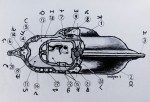


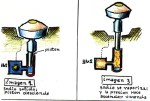
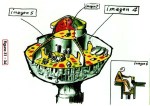


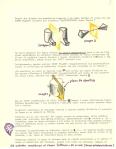
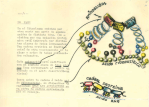






Pingback: “Stoned at Shadow Lake”: The Journals of Heron Stone, 1977
Pingback: American Monoliths: Local Pride and Global Anxiety in ‘The Georgia Guidestones’
Pingback: “Fact—Not Fiction”: UFO Journals from the Archives for the Unexplained
Pingback: Friends From the UFOs – Podcast UFO
Pingback: The UMMO Letters – Away !